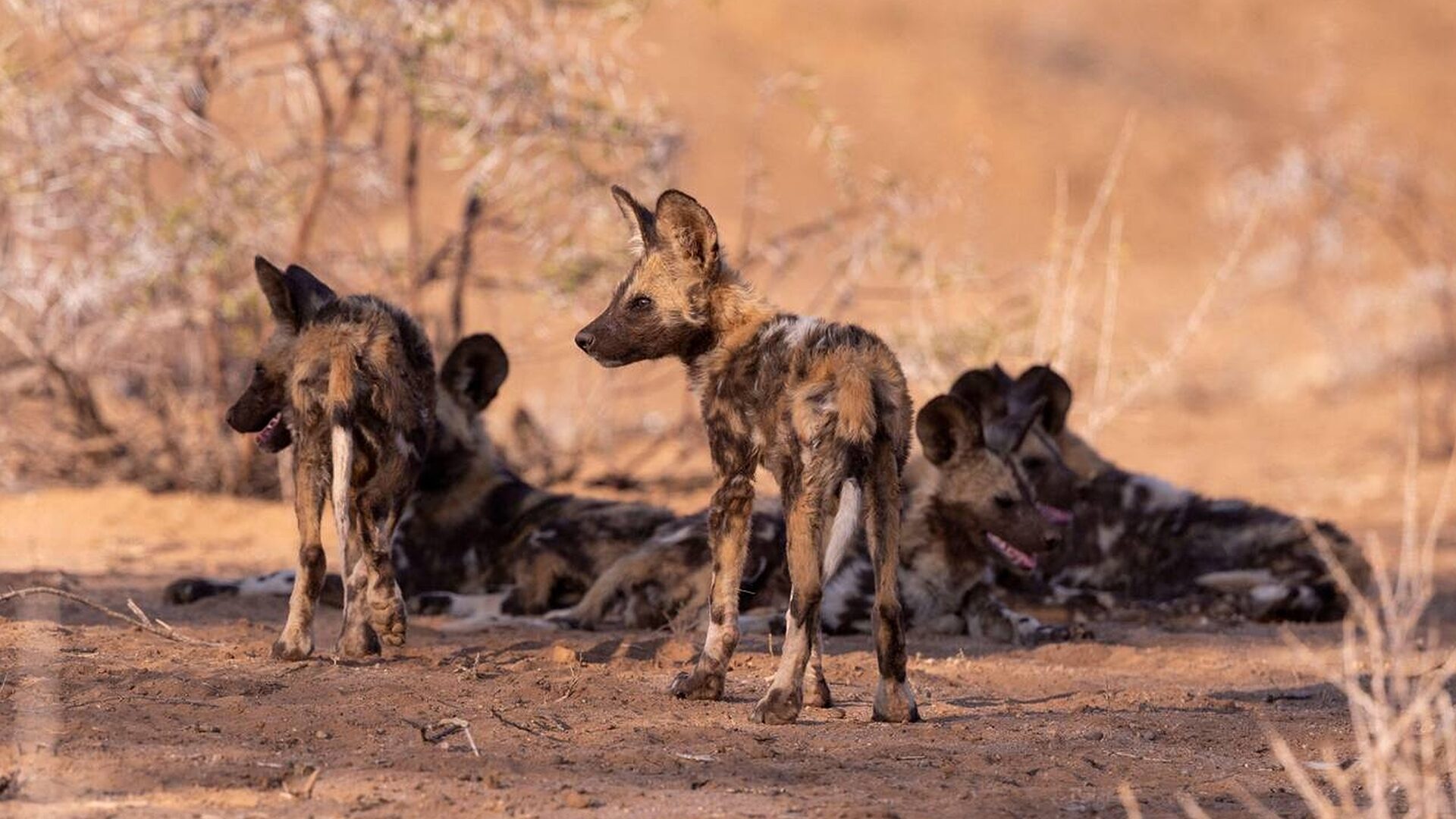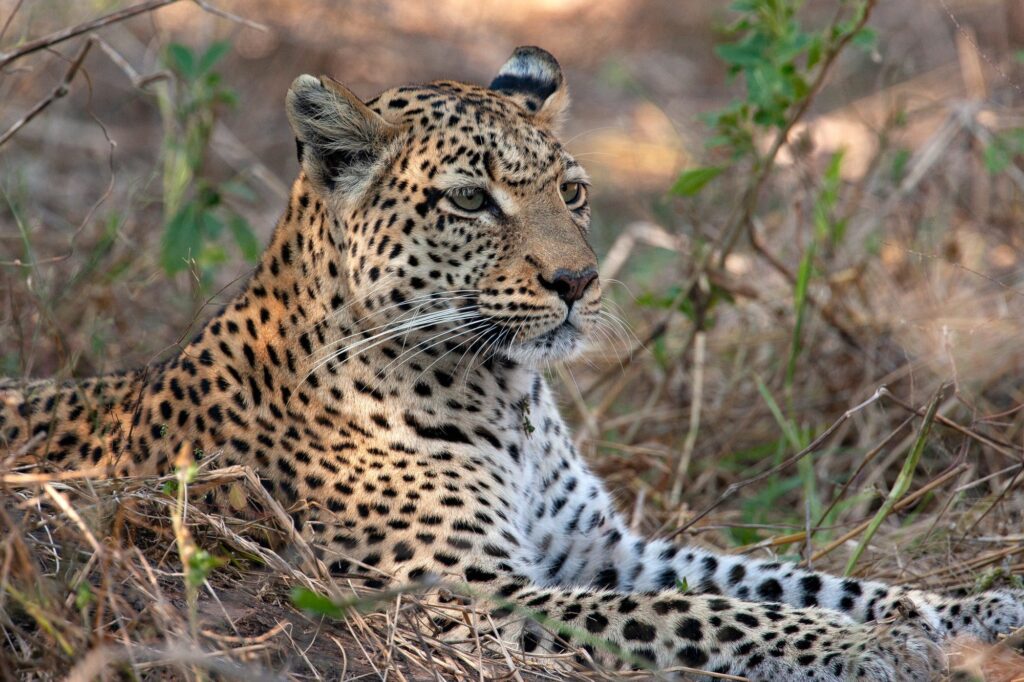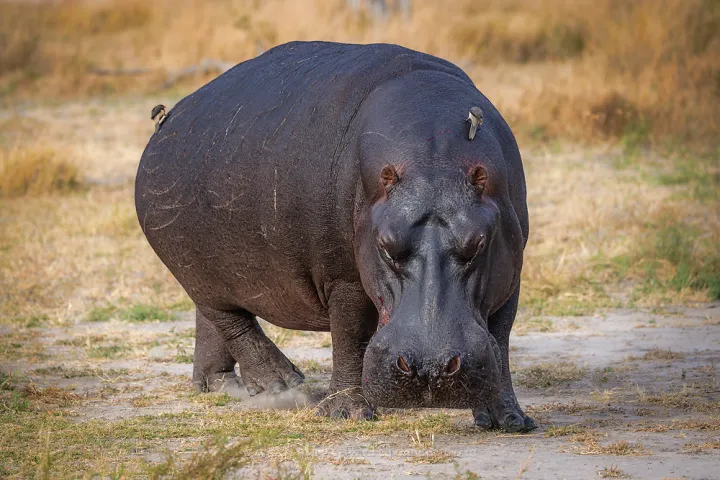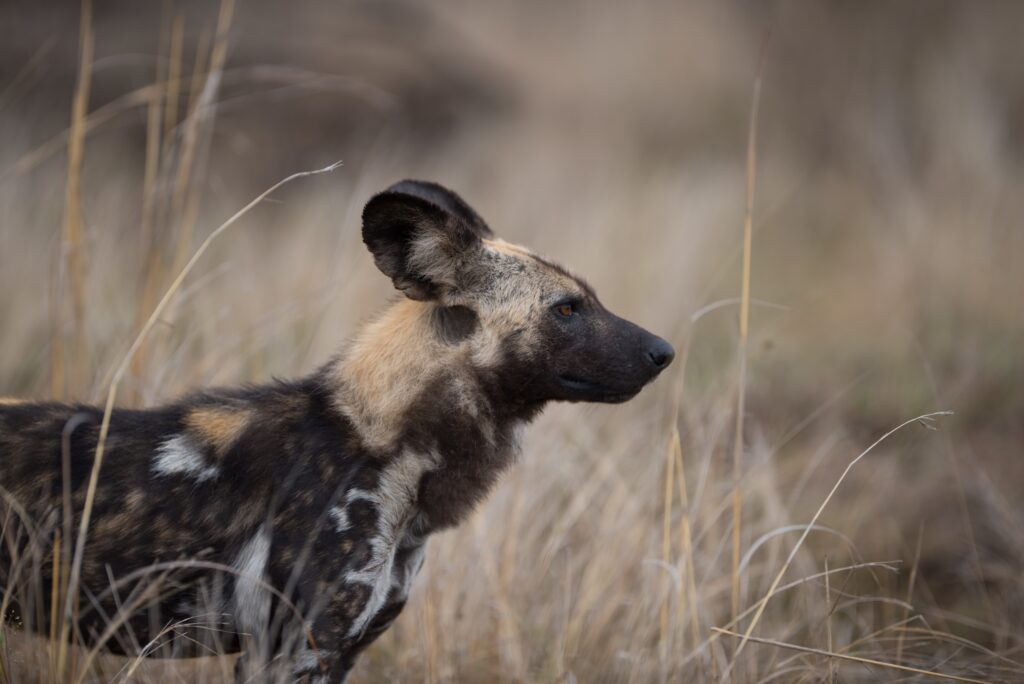The African wild dog (Lycaon pictus), also known as the African painted dog or painted wolf, is one of the most intriguing and misunderstood predators roaming the African wilderness.
With an estimated population of only 6,600 remaining in the wild, this unique species is facing a serious threat of extinction due to habitat loss, human-wildlife conflict, and disease. Their distinct appearance, social structure, and behaviors set them apart from other predators, making them a captivating subject for wildlife enthusiasts and conservationists alike.
In this blog, we’ll explore the top five most interesting facts about the African wild dog, shedding light on what makes these animals so extraordinary and why they deserve our attention and protection.
Here are the top 5 Interesting Facts about African Wild Dogs;
Introduction to African Wild Dogs
The African wild dog, also known as the painted dog or Cape hunting dog, is a highly social and endangered species native to sub-Saharan Africa. With their unique coat patterns and distinctive appearance, they are a fascinating and charismatic animal.
African wild dogs are known for their cooperative behavior, intelligence, and adaptability, making them a vital part of their ecosystems. In this article, we will delve into the world of African wild dogs, exploring their behavior, habitat, conservation status, and the threats they face in the wild.
1. Size and Appearance: A Distinctive Look
African wild dogs are medium-sized carnivores with males slightly heavier than females. On average, they weigh between 40 and 79 pounds, with body lengths of 30 to 43 inches. They stand at a height of 24 to 30 inches at the shoulder. Interestingly, females are often larger than males, which is unusual among carnivores.
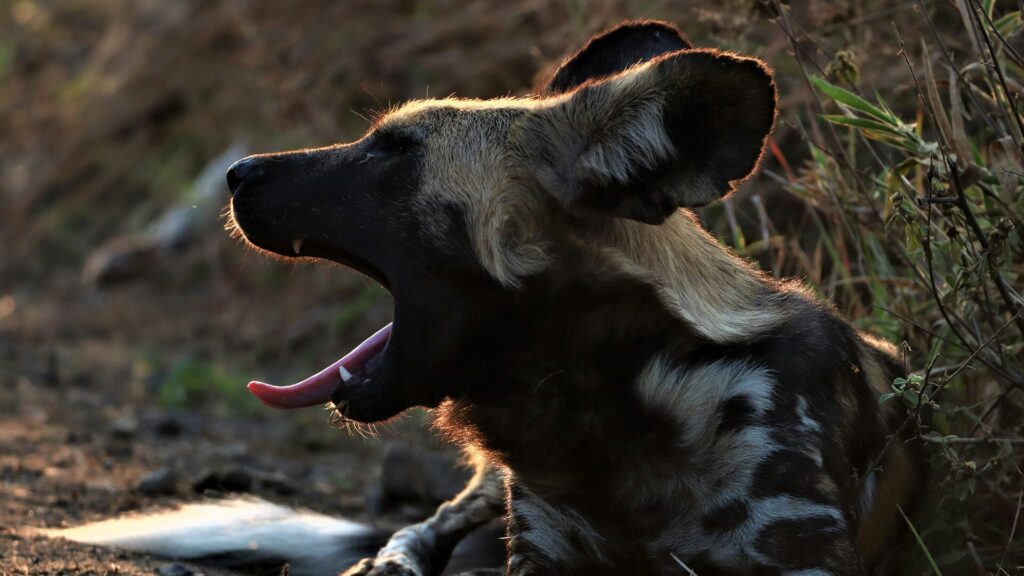
Their appearance is truly distinctive and makes them easy to recognize. The dogs have large bat-like ears that aid their exceptional hearing, and their bushy tails end with a white tip, which may help them stay in contact with each other while hunting.
Their fur is a patchwork of black, white, brown, and yellow patches—each dog’s unique coat pattern is as distinctive as a human fingerprint. These striking patterns not only serve as camouflage in their natural habitat but also help conservationists and researchers identify individuals.
2. Highly Social and Cooperative Hunters
African wild dogs are known for their strong social bonds and highly cooperative behaviors. They live in packs ranging from 5 to 20 individuals, with the pack structure led by a monogamous breeding pair, consisting of an alpha male and female. This pair is usually the only breeding pair in the pack, while other pack members work together to hunt, raise pups, and protect their territory.

Within the pack, cooperation is key, particularly when it comes to hunting. Wild dogs are opportunistic predators, taking down prey much larger than themselves, including antelopes, warthogs, wildebeest calves, and even birds. Their teamwork sets them apart—packs work together, silently stalking their prey before launching a pursuit that can reach speeds of 41 mph and last up to 3 miles.
Their hunting success rate is around 80%, far higher than that of other predators like lions and leopards. This extraordinary success is attributed to their ability to communicate and collaborate effectively, making them some of the most efficient predators in Africa.
3. Unique Breeding and Pup Rearing Practices
The social structure of African wild dogs extends to how they raise their young. The alpha female typically gives birth to a litter of 2 to 20 pups, and the entire pack helps care for them.
Once the pups reach about four weeks old, pack members begin regurgitating food for them. By eight weeks, the pups start weaning, and at 16 weeks, they leave the den to follow the adults on hunts.
African painted dogs have a carnivorous diet and hunt in large packs, which allows them to take down prey much larger than themselves. This pack hunting strategy, combined with their endurance, helps them secure food efficiently and quickly to avoid competition from larger predators.

One of the most remarkable aspects of wild dog society is how the pack prioritizes the pups during feeding.
When the young are old enough to follow adults to a kill, they are given the first opportunity to eat, while adult pack members stand guard to protect them from other predators. This nurturing approach ensures that the pups grow quickly and become strong members of the pack.
Another unique behavior is that females typically leave their birth pack at around three years old, often accompanied by their sisters, to form new packs or join other groups.
In contrast, males usually stay with their birth pack for life, leading to packs being predominantly male. This structured yet flexible social system is key to their survival.
4. Wide Range and Habitat Diversity
African wild dogs are native to sub-Saharan Africa, but their range has shrunk significantly over the past few decades. They are now primarily found in southern and East Africa, with significant populations in countries like Tanzania, northern Mozambique, and Botswana. The largest concentration is in southern Africa, especially in protected areas like the Okavango Delta.
These adaptable animals can live in a variety of habitats, ranging from dense forests to open plains. Specific prey species play a crucial role in their diet, allowing them to hunt larger animals due to their pack size and unique hunting strategies.
However, they tend to thrive best in savannas and woodlands, where their nomadic lifestyle can be fully utilized. African wild dogs roam large territories in search of prey, with some packs occupying home ranges as large as 900 square miles.
This need for vast territories poses a challenge for their conservation, especially as human populations continue to encroach on their natural habitats. Maintaining wildlife corridors and protected areas is critical for their survival.
5. Longevity and Lifespan in the Wild
In the wild, African wild dogs have an average lifespan of 10 to 12 years. Painted dogs, also known as African wild dogs, are critically endangered, and their strong social structures play a crucial role in their survival.
While this may seem relatively short, it is comparable to other large carnivores like lions and cheetahs. However, life in the wild is filled with dangers, including conflict with larger predators like lions and hyenas, disease, and human encroachment.
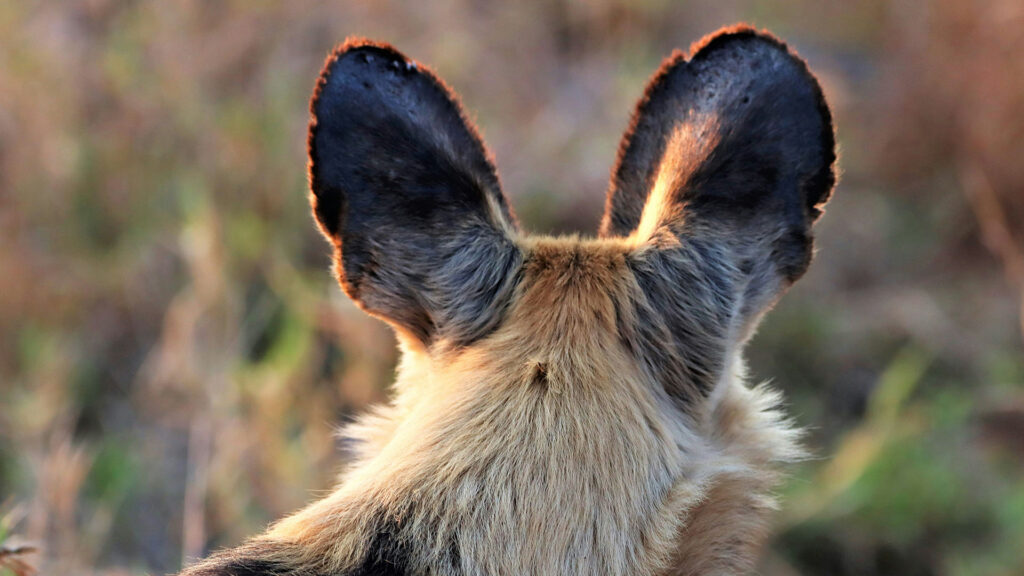
Despite these challenges, their strong social structure helps them survive in such a harsh environment. Injured or sick pack members are often cared for by the rest of the pack, allowing them to recover and remain a functioning part of the group.
This level of loyalty and cooperation is rare in the animal kingdom and speaks to the close-knit bonds that characterize African wild dog packs.
Conservation Status of Wild Dogs
African wild dogs are listed as Endangered on the IUCN Red List, with only around 6,600 adults remaining in the wild.
The species has been declining due to habitat loss, human-wildlife conflict, and disease. The largest subpopulation is estimated to consist of fewer than 250 individuals, making conservation efforts crucial to the survival of the species.
African wild dog populations are fragmented, with most populations found in southern Africa, particularly in Kruger National Park. Conservation efforts are underway to protect and expand their habitats, reduce human-wildlife conflict, and monitor disease outbreaks.
Threats to Survival and Conservation Efforts
African wild dogs face numerous threats to their survival, including habitat loss and fragmentation, human-wildlife conflict, disease, and poaching. Habitat loss and fragmentation have reduced the available space for wild dogs to roam, leading to increased competition for resources and human-wildlife conflict.
Human-wildlife conflict is a significant threat, as farmers often blame wild dogs for livestock losses and retaliate against them. Disease outbreaks, such as rabies and distemper, can decimate wild dog populations, and poaching remains a threat in some areas.
Conservation efforts are focused on protecting and expanding habitats, reducing human-wildlife conflict through education and outreach programs, and monitoring disease outbreaks. Additionally, efforts are being made to establish corridors to connect fragmented habitats and allow for the exchange of individuals between populations.
Explore Khwai for Some great Wild Dog Sightings
African wild dogs are not only one of the most unique and socially complex species in the animal kingdom, but they are also crucial to the health of African ecosystems.
Painted dogs play a vital role in the African ecosystem, and various conservation efforts are underway to protect them from threats such as habitat loss and competition with larger predators.
Their ability to work together to hunt and care for their young, combined with their distinctive appearance and remarkable survival strategies, makes them a species worth protecting.
As one of Africa’s most endangered animals, efforts to conserve wild dog populations are critical, ensuring that future generations can continue to learn from and admire these incredible creatures.
Frequently Asked Questions
How fast can an African wild dog run?
African wild dogs can reach up to 44 miles per hour (71 kilometers per hour), allowing them to chase down prey efficiently over long distances.
How many African wild dogs are left?
There are approximately 6,600 African wild dogs left in the wild. Their population has been drastically reduced due to habitat loss, human-wildlife conflict, and disease.
Why are African wild dogs’ ears so big?
Their large ears help them pick up sounds from long distances and aid in thermoregulation by dissipating heat, keeping them cool during the hot savanna days.
Are African wild dogs smart?
Yes, African wild dogs are brilliant, and known for their problem-solving abilities, cooperative hunting strategies, and complex social behaviors.

